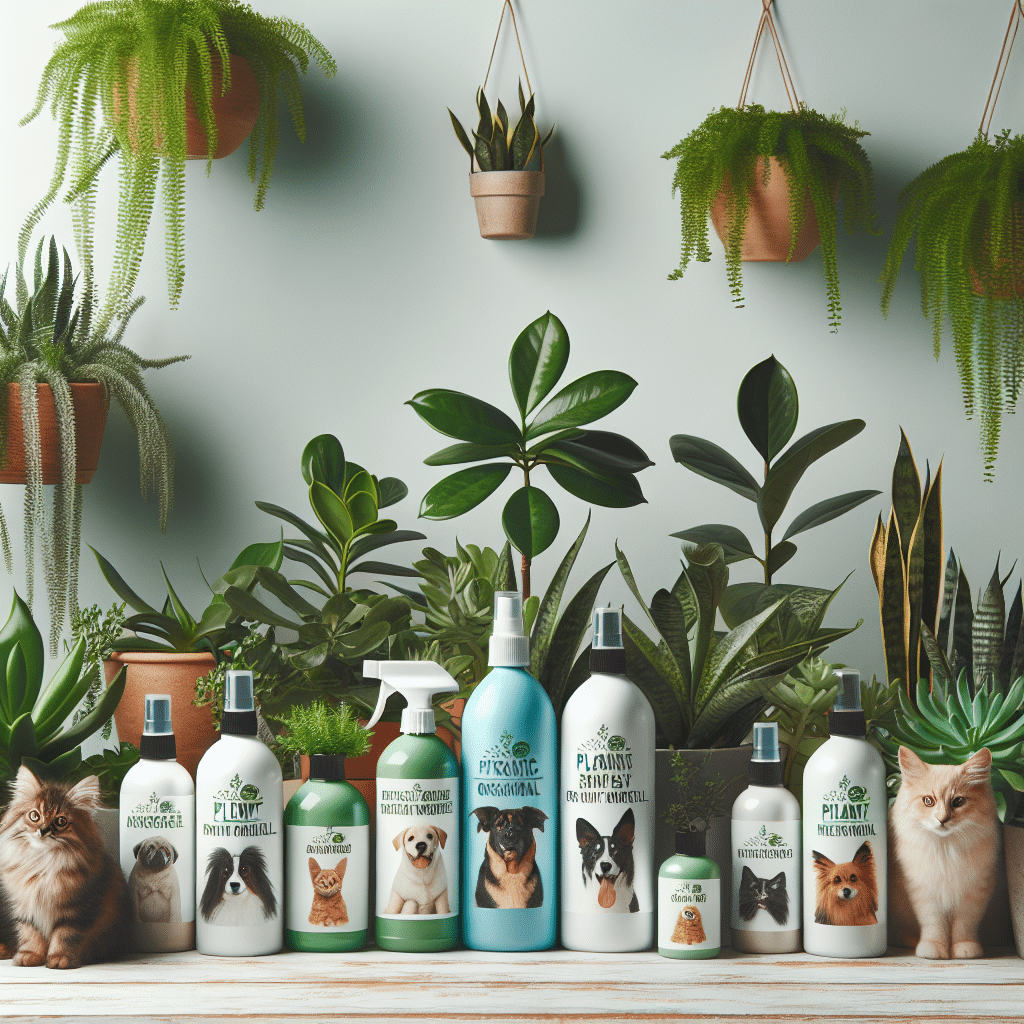Understanding Pet-Safe Plant Sprays
Importance of Pet-Safe Plant Sprays
With the rising trend of houseplants enhancing home aesthetics and indoor air quality, pet owners increasingly prioritize finding safe options for their furry friends. Traditional plant sprays often contain harmful chemicals that can pose severe health risks to pets. Therefore, opting for pet-safe alternatives is vital for maintaining a healthy environment.
What to Look for in Pet-Safe Plant Sprays
-
Ingredients: Always check the label for natural ingredients. Avoid harmful chemicals like neonicotinoids, which can be toxic to pets.
-
Efficacy: Ensure the spray effectively prevents pests such as aphids, spider mites, and mealybugs without compromising pet safety.
-
Application: Look for formulations that are easy to apply, ideally in a spray bottle that allows for even coverage on plant foliage.
-
Safety Certification: Certifications from organizations such as the Environmental Protection Agency (EPA) or the National Organic Program provide extra assurance of safety.
-
User Reviews: Checking feedback from other pet owners can offer insights into effectiveness and real-world safety.
Top Pet-Safe Plant Sprays
1. Neem Oil Spray
Ingredients: Azadirachtin, cold-pressed neem oil, and water.
Effectiveness: Neem oil disrupts pest life cycles, making it a powerful solution against a variety of insects.
Application: Mix with water in a spray bottle and apply weekly or bi-weekly depending on pest presence.
Safety: Generally regarded as safe for cats and dogs, neem oil is non-toxic when appropriately diluted.
2. Diatomaceous Earth Spray
Ingredients: Diatomaceous earth mixed with water and natural surfactants.
Effectiveness: Works by dehydrating insects, making it effective against crawling pests like ants and cockroaches.
Application: Dust the powder directly on plants or mix it in a spray for comprehensive coverage.
Safety: The food-grade version is safe for pets and humans, but care should be taken to avoid inhalation.
3. Insecticidal Soap
Ingredients: Natural fatty acids and oils (like canola or palm oil) in a soap base.
Effectiveness: Kills soft-bodied pests on contact but requires repeated application for sustained results.
Application: Spray directly on pests, making sure to cover the undersides of leaves.
Safety: Non-toxic to pets when dry; follow the label guidelines to ensure safety.
4. Essential Oils Blend Spray
Ingredients: A blend of essential oils such as lavender, peppermint, and rosemary.
Effectiveness: Essential oils repel various insects and can enhance the appeal of indoor plants.
Application: Mix essential oils with water and a carrier oil. Spray onto foliage, avoiding direct contact with pets.
Safety: While many essential oils are generally safe, be cautious, as some oils can be harmful to cats and dogs in concentrated doses.
5. Garlic Spray
Ingredients: Extracted garlic, water, and a few drops of dish soap.
Effectiveness: Known for repelling many pests, garlic disrupts the scent trails of insects.
Application: Mixing crushed garlic with water creates a potent spray for outdoor and indoor plants alike.
Safety: Safe for pets and can also deter pests due to its strong scent.
6. Vinegar Spray
Ingredients: White vinegar mixed with water.
Effectiveness: Vinegar can ward off pests like ants and aphids; however, it may affect the plant’s health if over-applied.
Application: Spray a diluted solution on affected plants, but avoid saturating the leaves.
Safety: Generally safe for pets, but be mindful of its acidic nature.
Application Tips
- Test Patch: Before full application, test a small area on the plant to ensure there’s no adverse reaction.
- Timing: Early morning or late evening is ideal for spraying plants to avoid sun exposure and potential leaf burn.
- Frequency: Depending on the type of spray, follow label instructions for how often to apply, and adjust based on pest activity.
Additional Safety Precautions
- Keep pets away during application until the spray has dried to minimize the risk of ingestion.
- Store plant sprays in a secure location out of reach of pets.
- Observe your pet for any unusual behavior after application.
FAQs About Pet-Safe Plant Sprays
1. How often should I use pet-safe plant sprays?
The frequency of application is determined by the type of pests you are dealing with and the specific product instructions. Generally, every week or bi-weekly is a good routine unless the label states otherwise.
2. Are natural ingredients completely safe for pets?
While many natural ingredients are safer than chemical alternatives, it’s essential to do thorough research. Some natural substances (like certain essential oils) can still be harmful, especially to cats.
3. Can I create my own pet-safe spray?
Yes! Many DIY recipes exist, using safe ingredients like olive oil, soap, and vinegar. Ensure proper research is conducted to avoid using harmful substances.
4. What should I do if my pet accidentally ingests a plant spray?
Contact your veterinarian immediately, especially if the spray contains any active ingredients. Providing product details and the amount ingested will assist in diagnosing the situation optimally.
With numerous options available today, selecting a suitable pet-safe plant spray can protect both your beloved green companions and your furry friends.
